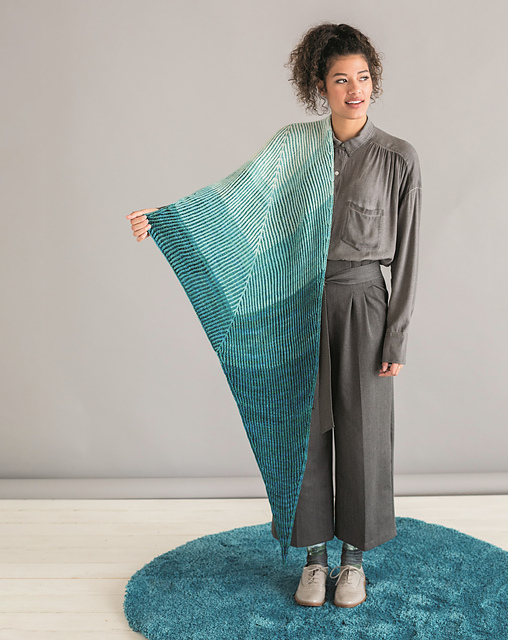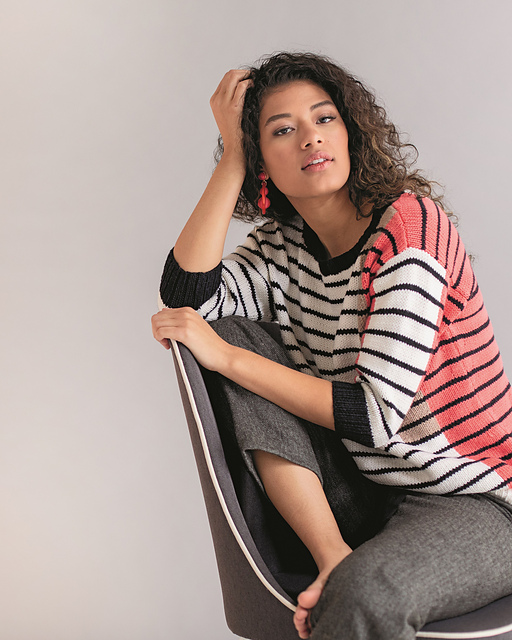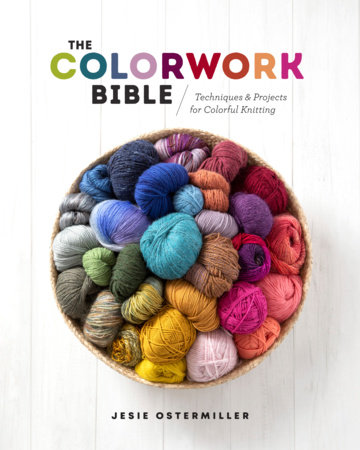I received a copy of The Colorwork Bible in exchange for my honest review. I received no compensation, and there are no affiliate links.
Some of you know that I do love me some colorwork knitting. I’m getting real itchy to cast on a new sweater but it’s also in the mid-70s here right now. So if I tried it, I would in fact be super itchy (warm weather + wooly wools = itch!).
My love of colorwork knitting and Jesie Ostermiller’s excellence at designing colorwork patterns is why we became pals over the years. (That, and one languishing cross-stitch project. Story for another time.) So I was overjoyed when Jesie asked me to review her upcoming book, The Colorwork Bible (Penguin Random House, 2020). Let’s dive in!
What is The Colorwork Bible?
This book is intended to be a one-stop shop for anyone interested in playing with color. It covers stripes, stranded colorwork, brioche, intarsia, double-knitting, and slipped stitch/mosaic knitting. Each technique features illustrated step outs to help, and many include different options depending on how you knit (yarn in left hand or yarn in right hand). Twelve patterns accompany the techniques, giving the knitter ample opportunity to practice.

Jesie’s introduction, which you can read, along with the first chapter, on the Penguin Random House website, sets out the plan. Borrowing from music theory, Jesie begins with the basics of knitting with color (in this instance, stripes), and builds from there. The tone is conversational and friendly, as though you have a buddy sitting next to you helping you learn.
Who might be most interested in this book?
If you’re someone who has been hesitant to dive into knitting with different colors, The Colorwork Bible is an excellent book for you. Jesie walks through color theory, giving you tips and tricks to help a knitter confidently choose colors and yarns for the projects. Each section also has “Swatch Lessons” to help knitters master a particular technique before investing in a full-on pattern.

If you’re someone who is very confident with colorwork and has tried all of these techniques, there are still some great bits of information in here worth checking out. For example, I want to go back and study Jesie’s notes on the Italian two-color cast-on and selvedge stitches.
As someone who is more experienced with colorwork knitting, my focus immediately goes to the patterns. The Colorwork Bible includes 12 patterns, spanning the range of the different techniques. Personally, I like my books to have a few more patterns than that (at least 15). But I think the in-depth information on each technique is worth sacrificing a few patterns. I’ve been sprinkling my favorites in this blog post, but you can see all the patterns on Ravelry (why am I not linking that?) and on Jesie’s Instagram (@knitty_jo).
The Yukon Jacket shows bulky yarn in a stranded colorwork pattern that I just love. I’m a fan of the way the Kenai Shawl blends colors together in a simple but stunning brioche pattern. And there’s something about the classic styling of the Mod Sweater, which uses intarsia, that’s really calling to me.

You can also get a real quick overview of the patterns from this preview video.
A note about the sizing of the garments
(Background information was provided by Jesie.) The sizing is a smidge limited in light of recent conversations around size inclusivity, topping out around the 54-55″ chest circumference mark. This book started in 2018, before Interweave (the original publishers) imploded (my words, not hers) and before a lot of the discussion around knitting pattern sizes happened. Jesie is making a concerted effort to include larger sizes in her independently published patterns.

To Review
The Colorwork Bible by Jesie Ostermiller is a wonderful resource for any knitter looking to begin or expand upon their colorwork knitting journey. Tips on choosing colors and yarns, in-depth techniques with helpful illustrations, and swatch lessons help newer knitters progress their skills. More experienced colorwork knitters will love the projects and next-level information included within the technical sections.
You can find the book in bookstores everywhere on October 6. If you’d like to pre-order it, it’s on Amazon, or you could “damn the man” and order it from Bookshop.org and support independent booksellers. As of this writing you’ll actually save a little bit of money through Bookshop.org, so…
